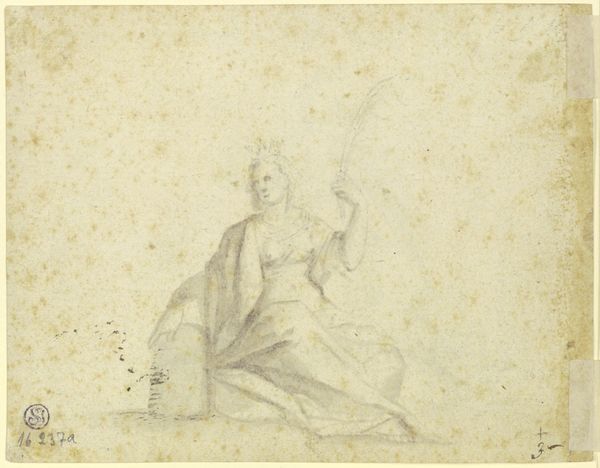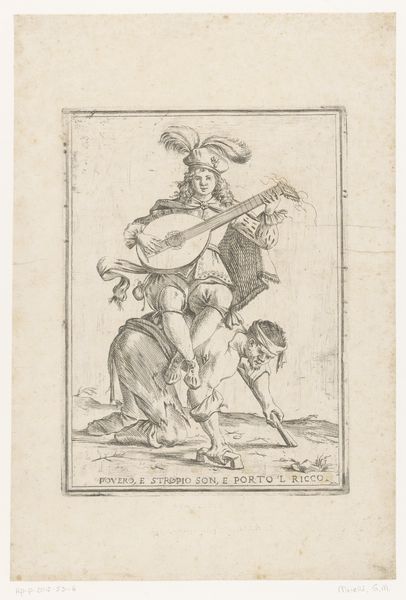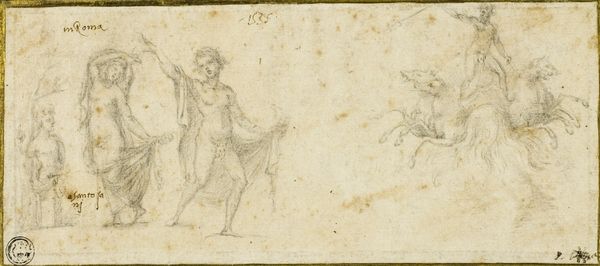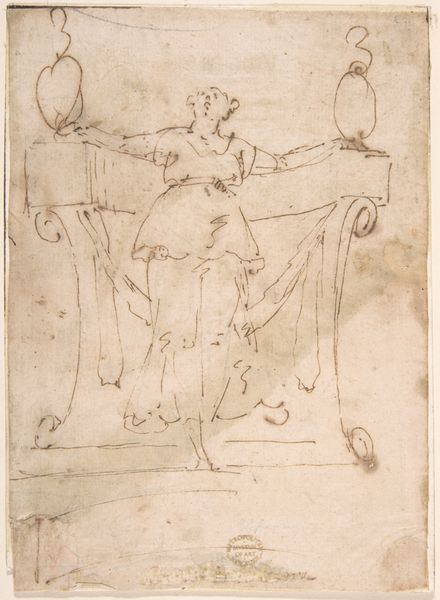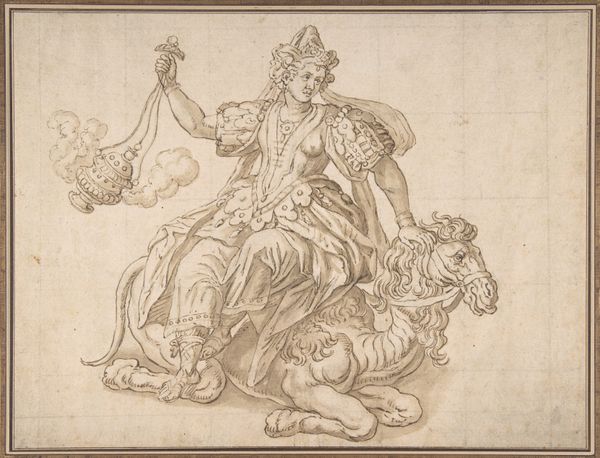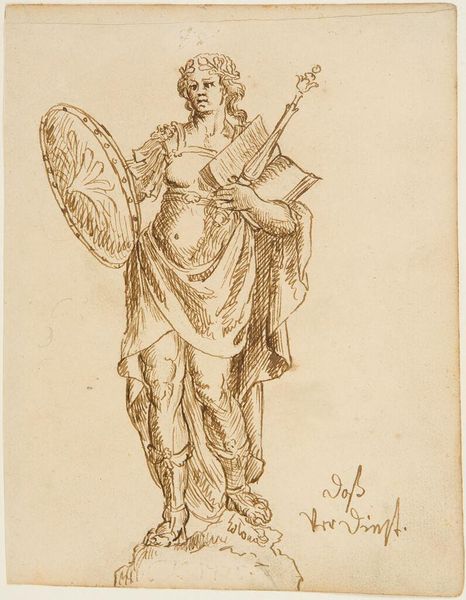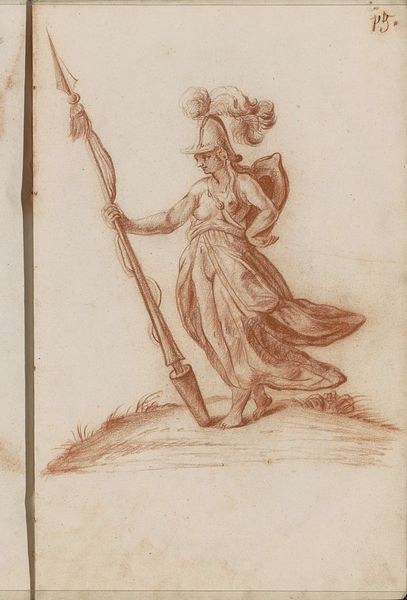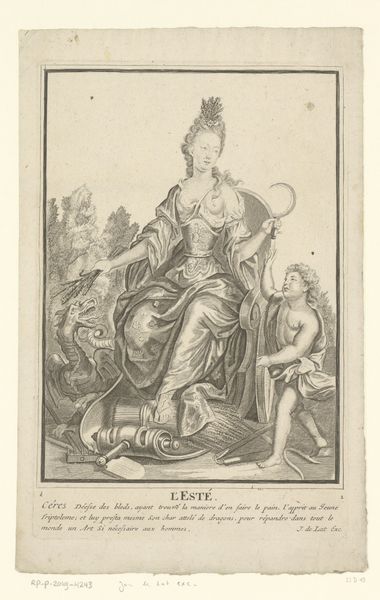
drawing, ink, pen
#
portrait
#
drawing
#
figuration
#
11_renaissance
#
personal sketchbook
#
ink
#
pen
Copyright: Public Domain
Curator: Conrad Mantius, around 1600, sketched this figure, "Kniende Frauenfigur mit Palmenzweig (Fides)," in pen and brown ink. What leaps out at you initially? Editor: A hesitant hopefulness. The ink work feels tentative, and the figure, though regal, seems to clutch the palm branch, almost unsure. There's a certain fragility. Curator: Exactly! And think about the act of drawing itself at this time. The relative scarcity of paper; each line was a deliberate investment. Mantius likely used iron gall ink. The transformation of simple ingredients into a permanent, symbolic mark, speaks volumes. Editor: Ah, you’re drawing attention to the economy of it all! And yes, that raw process... Imagine preparing the ink from gallnuts and vitriol, maybe grinding pigments. It roots us in the physicality of artistic creation. Do you find the inscription informs the work? Curator: Profoundly. “Be faithful until death, and I will give you the crown of life.” The drawing is an exercise of Faith. She kneels, but on what exactly? Editor: I wondered! It looks like a crumpled cloth—ordinary, tangible. Is that a commentary on faith itself being something that's embodied? What strikes me is the stark contrast between the woman’s ornate headdress and simple garments. How much did the materials and time it would take to make something more embellished affect the overall finished form of the drawing? Curator: Maybe she herself is crafted not unlike the ink from simple origins to embody something more, to become more elaborate over time, and maybe like you’re implying, that’s the real beauty and strength in her story. I appreciate the simplicity in the drawing, it has something essential and earnest. Editor: That earthiness elevates what could be just another allegorical drawing to something intensely personal.
Comments
No comments
Be the first to comment and join the conversation on the ultimate creative platform.
